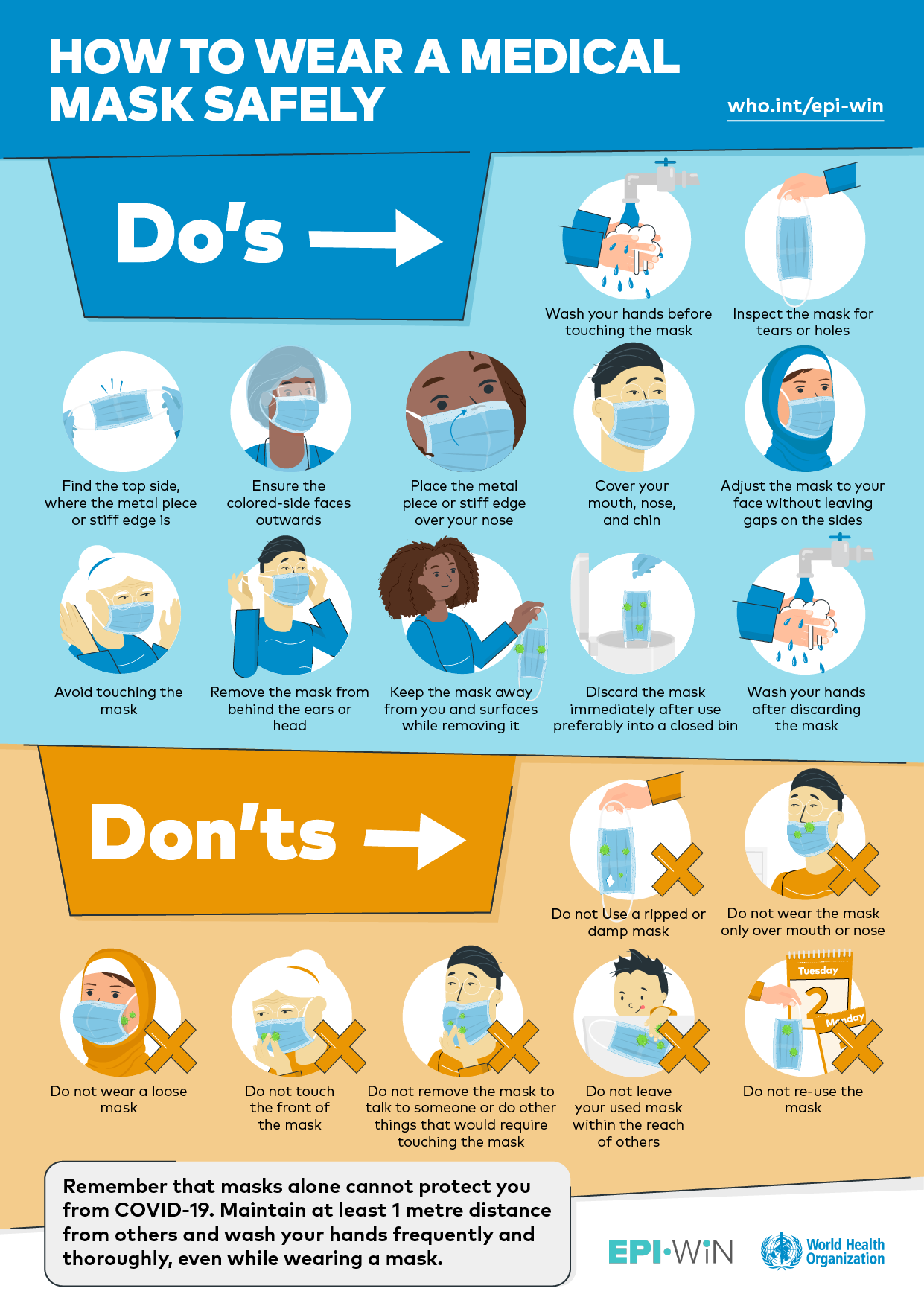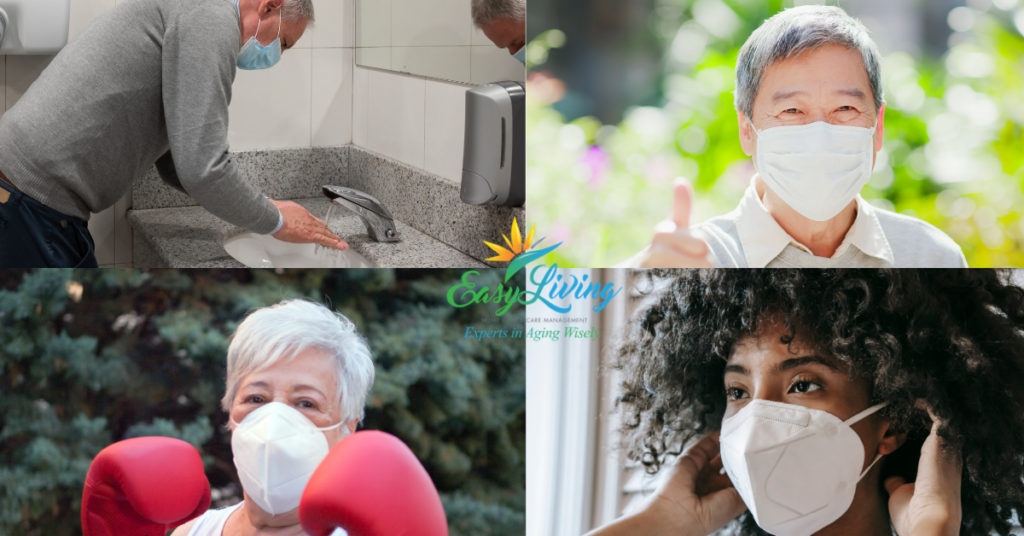Additionally, though the order cannot mandate wearing a mask for states and tribal areas, it did include a provision for “encouraging masking across America” by engaging with officials, business, academic and other leaders about wearing a mask and other public health measures. Furthermore, this order established a safer federal workforce task force.
Wearing a mask has been a major tenant of the health recommendations around COVID-19. With this renewed push for wearing a mask, some people may be wondering, does it really save lives? What does science show? And, since wearing a mask has become part of our “new normal”, we’ll offer some tips for effective mask wearing and communicating while wearing a mask.
Does wearing a mask save lives?
There are several different research areas supporting the efficacy of masks. One category of evidence comes from laboratory studies of respiratory droplets and the ability of various masks to block them.
But the strongest evidence in favor of wearing a mask comes from studies of real-world scenarios. A study published in Health Affairs, for example, compared the COVID-19 growth rate before and after mask mandates in 15 states and the District of Columbia. It found that mask mandates led to a slowdown in daily COVID-19 growth rate, which became more apparent over time. Another study looked at coronavirus deaths across 198 countries and found that those with norms or policies favoring wearing a mask had lower death rates.
Two compelling cases also suggest that masks can help in high-risk scenarios. In one case, a man flew from China to Toronto and subsequently tested positive for COVID-19. He had a dry cough and wore a mask on the flight. In the end, all 25 people closest to him on the flight tested negative for COVID-19. In another case, two hair stylists in Missouri had close contact with 140 clients while sick with COVID-19. Everyone wore a mask and none of the clients tested positive.
The evidence is clear that wearing a mask can save lives. However, wearing a mask does not completely protect from the virus. Therefore, other safety and hygiene protocols are still vitally important. Physical distancing and avoiding high-risk scenarios are equally important. Such high-risk scenarios include crowds and indoor spaces where ventilation is poor, especially when people are talking, singing, and/or eating and drinking. We will also share tips below on maximizing the benefits of wearing a mask.
What We’re Doing: At EasyLiving, our care team members are required to wear masks when providing client care. We have continued to emphasize the importance of wearing a mask with our clients, caregivers, and other team members. Additionally, we have provided PPE and training on its proper use.
Important Pointers about Effectively Wearing a Mask
What type of mask is best?
The effectiveness of masks can range “from 0 to 80 percent, depending on material composition, number of layers and layering bonding,” said Dale Pfriem, president of Protective Equipment Consulting Services. He is a member of the standards development working group addressing mask guidelines.
The most protective mask is the N95, which fits tightly and can filter out at least 95 percent of very small particles. Due to shortages, the KN95, a Chinese equivalent, has been widely sold. If they are manufactured correctly, they are also highly effective. One step below the N95s in terms of protection are FDA-approved surgical masks.
Just about any mask is better than no mask, public health experts say. The CDC notes that a tightly woven, multilayered fabric offers better protection than a mask made from a single layer of fabric or a loose knit — for both the wearer and the people with whom the wearer comes in contact. The good news is that the CDC is working with an industry standards group to develop filtration standards. And, products that meet them will be able to carry labels saying so. This will make things clearer for consumers.
What should I keep in mind when wearing a mask?
- Clean your hands before you put your mask on, as well as before and after you take it off, and after you touch it at any time.
- Make sure it covers both your nose, mouth and chin.
- When you take off a mask, store it in a clean plastic bag, and every day either wash it if it’s a fabric mask, or dispose of medical masks.
- Don’t use masks with valves.

Tips for Communicating When Wearing a Mask (Especially with Older Adults)
We’ve all been there. Trying to understand someone through a mask, it is easy to miss some of the message. Masks have added a new level of complication to understanding and being understood. You can’t read lips and things are a bit muffled. Add this to trying to stay distanced and keep interactions brief, and communication just got a lot more complicated. Moreover, this can be especially challenging for caregivers. Many of their care recipients have some hearing loss. And, some have different levels of confusion. So, communicating clearly is essential. It has been made that much harder with wearing a mask.
For people with speech difficulties, making themselves understood can be tough with a mask. And, people wearing hearing aids may have difficulty wearing masks comfortably without interfering with those devices. Our tips below should help!
Improving Communication When You’re Wearing a Mask
- Make sure you have the person’s attention and focus on the conversation.
- If providing care/helping someone with tasks, explain what you are doing. Introduce yourself, ensure the person is ready, and talk them through what you are doing.
- Try to ensure you are in a quiet place; turn off the TV and other distractions.
- Face your partner directly, and make sure nothing is blocking your view.
- Talk a little louder. Sometimes slightly deepening your voice can help too. Higher pitches are harder to hear, especially if someone has hearing loss.
- Talk a little slower.
- Use your hands and body language.
- Ask your partner if they understood you. Or, even better, clarify understanding with questions. If they have not understood, try saying it a different way or write it down. Think about communicating simply, with accompanying gestures. And, if giving instructions, for example, state one step at a time.
- If you’re talking with someone new, ask if there’s anything you can do to make communication easier for both of you.
Tips for Wearing Hearing Aids/Cochlear Implants With a Mask
- Secure your auditory aids with wig tape or other non-damaging material, like a cloth headband.
- Use a button extender for the mask to attach it behind your head.
- Take your mask off in a safe place, then check your device to make sure it’s working.
- Choose a mask that has string ties instead of ear loops.
More Coronavirus Resources
Florida COVID-19 Vaccine Information
COVID Wellness Checklist for Elders Living Alone
Questions to Ask the Care Facility When You Can’t Visit
The Difference Between Cleaning & Disinfecting
Mental Health Tips During a Pandemic
Keeping Elders Safe When COVID-19 Restrictions Loosen







